2019 | Panorama
Family Portrait with Flawed Heroine
With a strikingly compact and focused programme, the 2019 Panorama is heading off into the festival. In this interview, section head/curator Paz Lázaro and programme manager/curator Michael Stütz discuss key topics, the camera as a means of emancipation and successful escapes.
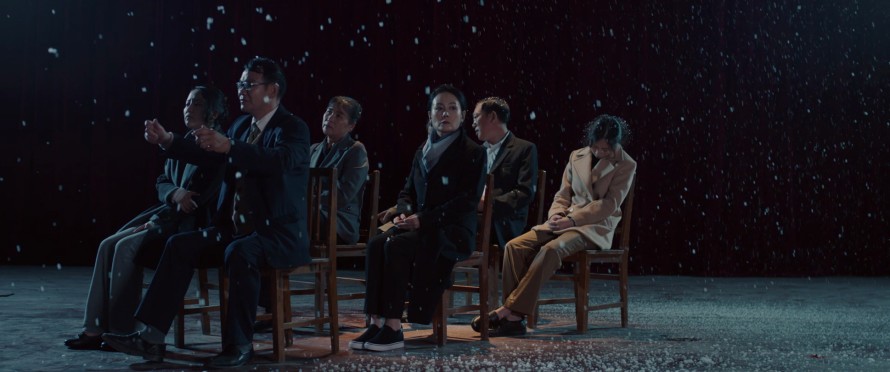
A Dog Barking at the Moon by Xiang Zi
Families appear to be the dominant topic in this year’s programme, would you agree?
Paz Lázaro: Family is indeed a dominant topic, but there is also a more general focus on communities. When it comes to a film like A Dog Barking at the Moon by Xiang Zi, you are right. The film shows people who are trapped in family structures decreed by the state. And everyone has completely accepted the dogma and internalised it.
The way the film is shot is extraordinary. The images themselves seem obsessively symmetrical, so there is scarcely any air left to breathe... Does this change during the course of the film?
PL: In the middle of the film there is a very long scene in a cafe where the daughter talks to her father’s male lover. It’s as though the whole film has come to a halt for this really extraordinary confrontation between two characters who exhaustively explore one topic. This communication is extremely important: it helps them to attain a new and different perspective.
Michael Stütz: In this scene, the system breaks apart because the younger generation have a totally different outlook on marriage and constraints. The young are open, educated and live according to their own individual life choices. It gives you a sense of the possibility for a radical change in society.
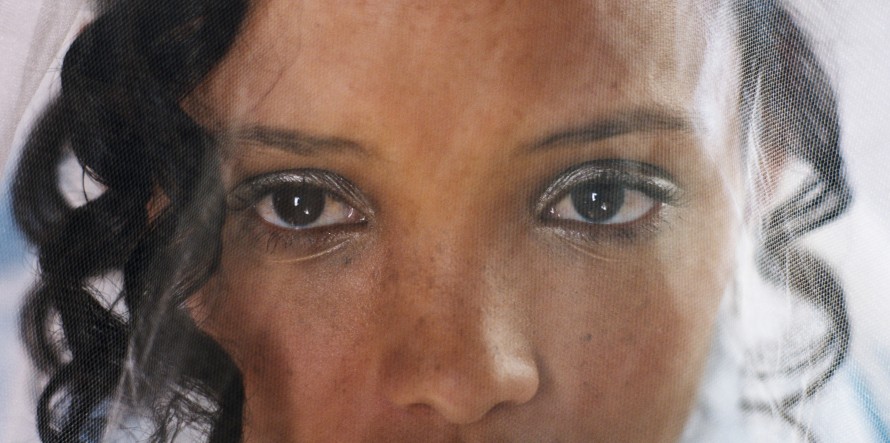
Nicole Fortuin in Flatland by Jenna Bass
Flawed Heroines
Marriage is also problematic in Flatland. The bride flees directly after her wedding...
MS: This escape is entirely positive. The bride is raped on her wedding night. The director then sends her and her best friend on a journey through patriarchal South Africa: a world completely dominated by men. Her friend is heavily pregnant but the father of her child isn’t interested. She doesn’t behave at all like a woman in her eighth month of pregnancy – she boozes and takes drugs. This is depicted in a very relaxed, beautiful and anti-moralistic way. At the same time, the film is an allegory of South African society and settles the score with the fantasy of the Rainbow Nation.
PL: The film counters the social climate with the humanity and integrity of women. It revolves around escaping, being different and the question of how to deal with this. And the alternatives people look for – even when they, theoretically, don’t have any. We have many heroines in the programme, but not of the conventional type. How did you put it so nicely?
MS: Flawed heroines. The filmmakers have the courage to present female characters who avoid being pigeonholed as simply good or evil. That’s present in all the films. Women don’t just have to be positive characters.
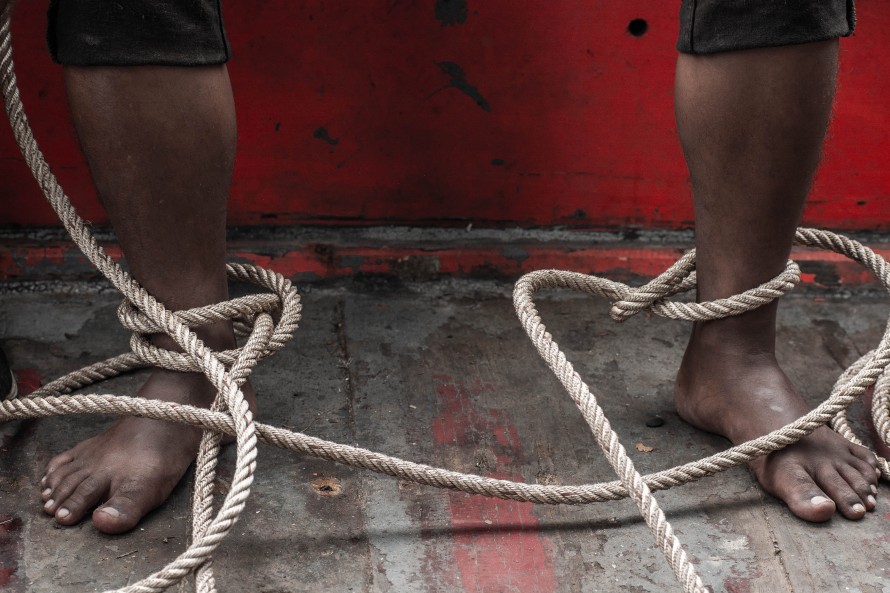
Buoyancy by Rodd Rathjen
What can be the alternative to family? In Buoyancy by Rodd Rathjen, escaping from the family leads straight to hell...
MS: That film is very much about the economic precariousness in which the family lives in Cambodia. The son wants a better future for himself; he wants to earn money. The father wants him to work for the good of the family. When the son hears about the factories in Thailand, he sets off. But he doesn’t have the money for the journey and becomes enslaved to work off the debt.
PL: At the beginning of the film, the boy gives his father a couple of home truths. That is extremely refreshing, coming from the mouth of a 15-year-old. He’s a clever kid who has to grow up too fast – a kind of forced coming-of-age. He has the outward appearance of a child, but he has to think like an adult.
In the Name of God
In many of the films, the constraints of the family are compounded by the constraints of religious sects. That’s also the case in A Dog Barking at the Moon…
MS: Yes. Ultra-religious communities. In A Dog Barking at the Moon, the mother thinks she can cure the father of his homosexuality. To her, the sect seems to present the only possibility to escape from the crisis of their lives. She’s trapped and feels powerless.
PL: A Dog Barking at the Moon addresses the topic in a rather ironic way and depicts the most inept sect you can imagine. You can see the same principle at work in Temblores (Tremors) by Jayro Bustamante. The protagonist goes to a sect-like conversion camp because religion defines homosexuality as an illness. The Brazilian Divino Amor (Divine Love) also tackles the theme of religion. The literal-evangelical interpretation of the Bible leads to organised sex orgies in the name of God. Irony plays a big part here. But the director Gabriel Mascaro had no idea when he began filming, how the political situation in Brazil would develop. Reality has quickly caught up with the film and eclipsed its science-fictional nature.
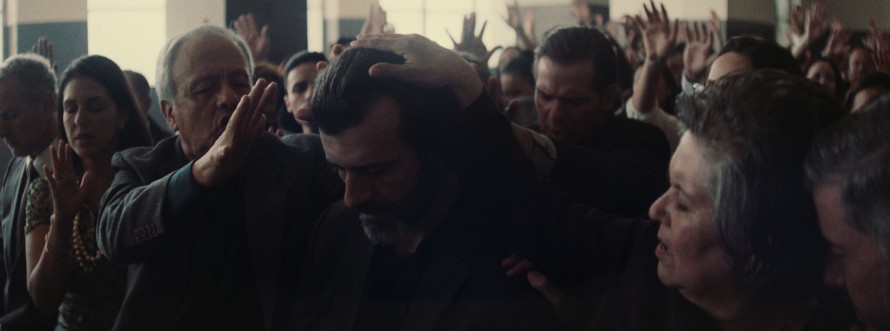
Temblores (Tremors) by Jayro Bustamante
And once again, the motif of marriage crops up, doesn’t it?
PL: It is an incomplete marriage, because the couple can’t have any children. The state sounds the alarm, because a marriage can only work out if it produces children. It isn’t a direct diktat, but it’s the engine of the conflict between the two protagonists.
Eynayim Sheli (Chained) by Yaron Shani is likewise about an unfulfilled desire to have children. A married couple tries several times to become pregnant; the film opens with yet another failed attempt. That’s one of the reasons why the protagonist, an extremely authoritarian character, ultimately loses control. Another is that he loses his job. That means a forced house arrest. He suddenly becomes massively involved in the life of his family, because he has too much time on his hands and needs to hang onto something solid. This makes the childlessness problem grow out of all proportion.
MS: Eynayim Sheli is a portrait of hyper-masculinity and, at the same time, its deconstruction. The main character is a policeman – a mirror of Israeli society, the patriarchy and a right-wing government. He defines himself solely by his power over others, even though he has a very tender relationship with his wife.
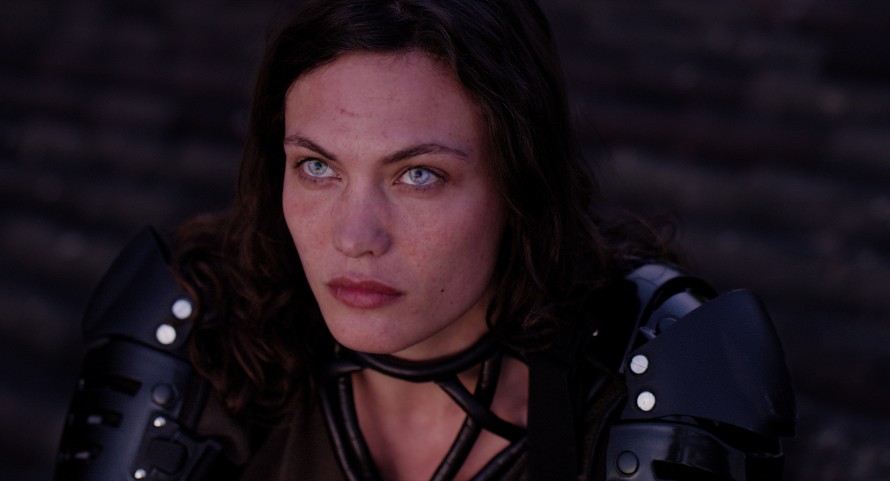
Aomi Muyock in Jessica Forever by Caroline Poggi and Jonathan Vinel
Can you view the communities in Jessica Forever and Monos as alternatives to family?
PL: Absolutely. Jessica Forever by Caroline Poggi and Jonathan Vinel tells the story of a group of outsiders: orphans who are branded public enemy number one by the state.
MS: In the future as depicted in the film, not having any parents is a criminal act. Jessica is the ultimate mother who keeps the group together, giving them a sense of security and direction. The state is omnipresent in the form of drones watching over everything. The dystopia is shown in a very interesting way, because everything takes place during daylight, under the blazing sun. It’s also intriguing to see how the outside world is addressed – this surveillance. It’s never fully explained in the film. The characters run through empty streets and department stores. Society still exists, but it is never seen.
PL: Monos by Alejandro Landes focuses on the internal dynamic of a group. It is a Colombian film full of violence. In Jessica Forever, conflicts are structured around the eponymous heroine. In Monos, these structures are missing. But there is also what is outside of the group, in the form of a state that we never see.
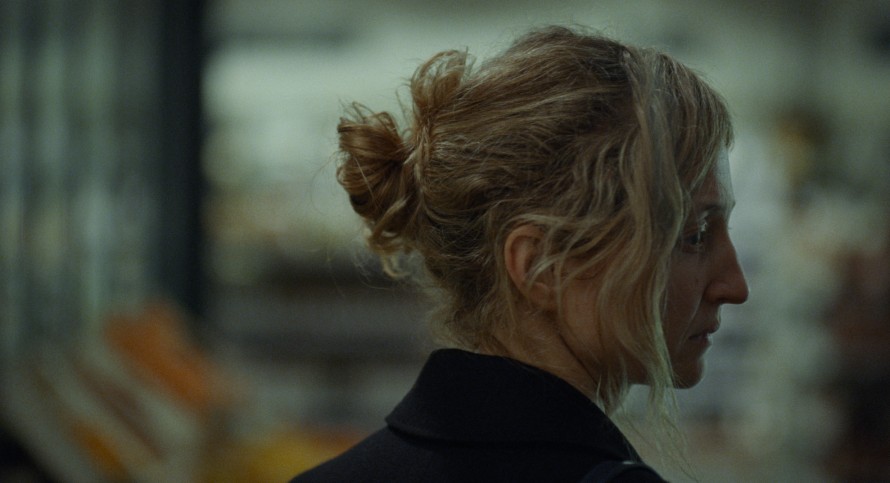
Alba Rohrwacher in Hellhole by Bas Devos
Images of Europe
Hellhole appears to paint an image of a disintegrating Europe...
MS: Yes. The film is a swansong to Europe. A very gloomy picture of the present. With its slow rhythm it is made in an incredibly hypnotic way. It plays dexterously with urban spaces and asks how people affect the city and how it affects them. In this, the camera is a separate protagonist. It gives the viewer the sense of an external world that controls everything, as though the characters are just marionettes. This portrait of Europe as a disintegrating society also appears in Western Arabs by Omar Shargawi, a film which depicts a world where communication is difficult and values are becoming fragile. Western Arabs shows Europe as a story of migration. It reveals a portrait of society by means of a single family.
What is the relationship between documentary and fiction in this film?
PL: The director uses a fictional story to give his father a role so that he can get closer to him. He mixes this fictional part with documentary images of the family and very interesting parallels emerge. The father is Palestinian. He was a soldier who then fled to Denmark where he met his wife, got married and had children – one of which is Omar Shargawi. Omar wants to know more about his father’s violence that shapes the family’s everyday life. At the beginning, the father struggles against being filmed. But as he relinquishes his resistance, we are given a glimpse of his philosophy of life which is extremely peaceful and humane. On the inside, he is a very thoughtful person but outwardly he appears violent and shaped by the trauma of war and being a refugee. Here, the camera becomes a means of reflection. It’s almost therapeutic.
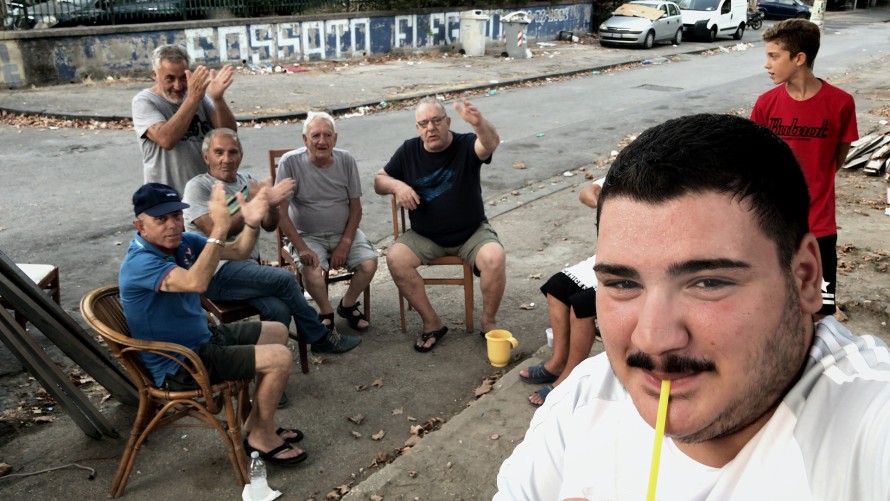
Selfie by Agostino Ferrente
Like in Midnight Traveler by Hassan Fazili and Emelie Mahdavian?
PL: Midnight Traveler is practically the prequel to Western Arabs. We accompany the three-year journey of a refugee family via the images they film on their mobile phones. It provides a very intimate perspective. The picture of Europe that emerges is very harsh. But there are also magical moments: in one scene the daughter grabs the phone and films herself dancing to a Michael Jackson song. The camera is also there for moments like this.
MS: Another beautiful moment is when the daughter confronts her parents with the fact that she doesn’t want to wear a hijab. She will soon be of the age when tradition demands her to do so. The father doesn’t mind. The mother finds it hard to swallow at first but then says, okay, decide for yourself. The daughter’s joy is overwhelming. There’s a big diversity of opinion in the family that debunks a lot of prejudices.
PL: Selfie was also filmed on mobile phones, though in terms of its topics it’s a very different story. It is about police violence and the mafia in Naples. Instead of undertaking the filming himself, the director Agostino Ferrente gives his protagonists cameras so they can film their everyday lives. The two soon become real filmmakers and learn how to compose the images. They also have the dream of breaking free, but there is almost no chance of escape.
MS: The course of their lives is more or less predetermined by being born in this part of town and into the lower-working class. The mafia presents the only possibility for them to make money and lead a better life. For the protagonists, the camera is a means of self-empowerment. It becomes a tool for them to take control of their lives.
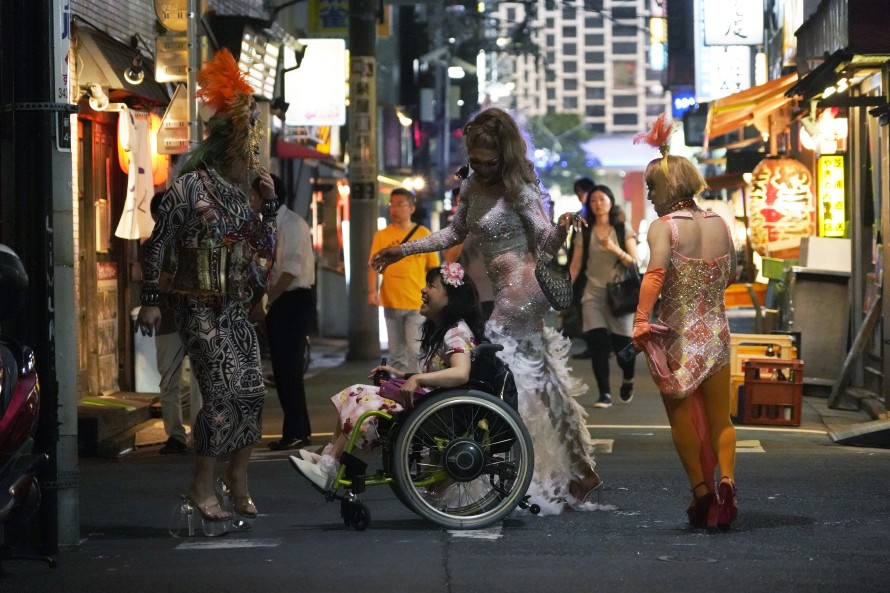
37 Seconds by HIKARI
Escapism and Successful Break Outs
Another film that tells the story of an attempt to break free from society and the family is the Russian Kislota (Acid) by Alexander Gorchilin, where one of the characters dissolves his father’s sculptures in acid...
MS: A symbolic image for the rejection of the father’s generation. It’s a strong statement because the sculptures are quite Leninist and dissolving them thus takes on a political dimension.
PL: In Kislota, breaking free happens by way of escapism. Drugs provide the escape from everyday life. The lack of direction experienced by the characters is transferred to the viewer. They change their opinion from one moment to the next and are bursting with energy. The film becomes a bit like a trip itself.
But there are also successful escapes in the programme. For example, in Skin by Guy Nattiv...
PL: Skin is based on a true story. It has a happy ending, but before that we experience the hell the protagonist goes through up close with him. He is tattooed all over his body and, with each step he takes away from the far-right milieu, he undergoes a painful laser treatment to have the tattoos removed.
37 Seconds by HIKARI also depicts a successful escape. The film tells the story of a female manga artist. It’s a very positive story with plenty of humour. She ends up in a publishing house for adult comics. It’s there that someone asks her for the first time why she’s in a wheelchair – something that never normally happens in Japanese society. The next question is: “How do you intend to draw comics about sex when you have no sexual experience?” But she doesn’t allow this to daunt her. Quite the opposite in fact: she goes out into the world and seeks out sexual experiences so that she can then draw them.